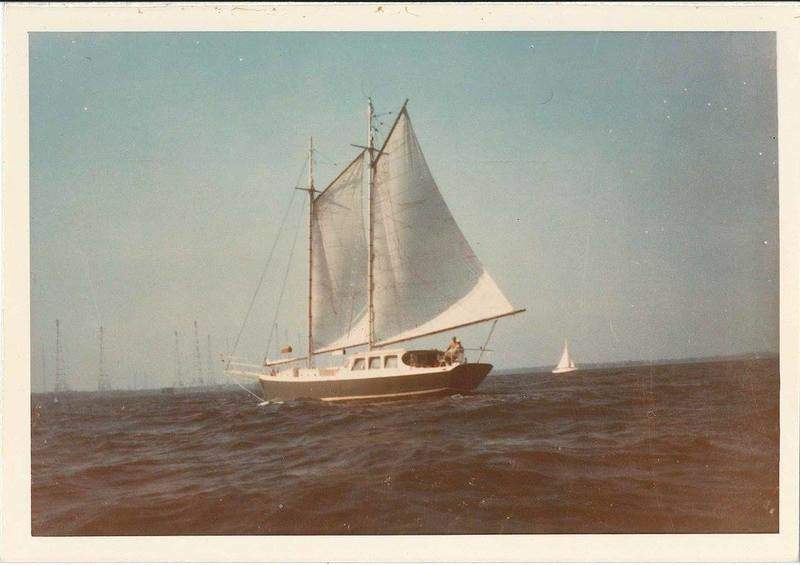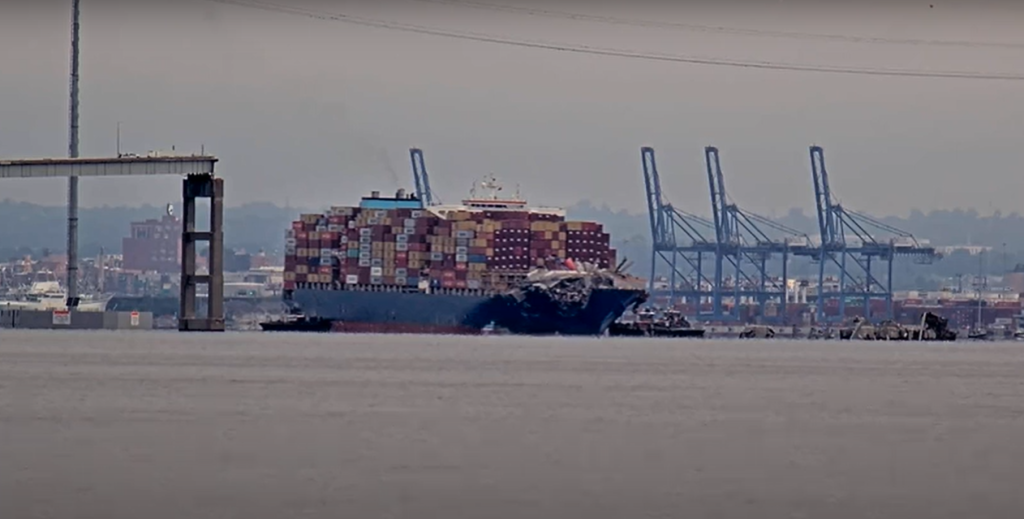
Built in Baltimore in 1946, the Apollonia is a 64ft steel-hulled schooner, clad with rugged quarter-inch thick steel plating. Designed by the American naval architect, J Murray Watts, the sailboat can carry 20,000lbs of cargo and is propelled by a traditional gaff-rig sail plan – or its vegetable oil-ingesting Detroit Diesel engine – as a backup.
Presently, the boat is being prepped for her latest incarnation: as a community sail freight cargo boat that will eventually traverse the 120 nautical miles of the Hudson River on a weekly basis.
The two-years-in-the-making carbon-neutral project was started by former filmmaker Jason Marlow and his mechanic partner Sam Merrett, who runs a business converting diesel vehicles to burn vegetable oil.
The pair were inspired to start the venture when they encountered the now obsolete Vermont Sail Freight project that also ran cargo along the river.
Learning from the project, the duo decided to start their own. However, though this method of transportation may belong to a by-gone era, Marlow assures there is nothing antiquated about their approach.
“It’s not like we were looking to run cargo and thought: ‘how did they do it in the past?’ We look at the river and the wind both as undervalued and under-tapped resources,” he says.
How well do you really know your competitors?
Access the most comprehensive Company Profiles on the market, powered by GlobalData. Save hours of research. Gain competitive edge.

Thank you!
Your download email will arrive shortly
Not ready to buy yet? Download a free sample
We are confident about the unique quality of our Company Profiles. However, we want you to make the most beneficial decision for your business, so we offer a free sample that you can download by submitting the below form
By GlobalDataLeveraging logistics
The basic idea is to sail the schooner, powered by wind, down the Hudson, stopping at different towns along the way to deliver goods.
So far, the team has been focused on refitting the schooner, with rigging planned to start in spring 2018.
Thereafter, to get the self-funded venture off the ground, they need to figure out an efficient local distribution network that is cost-effective and also upholds the clean energy element of the project, an element that is important to both Marlow and Merritt.
“The first and last mile is: how do we get the product from the producer to the ship and from the ship to the vendor, distributor or purveyor?” says Marlow. “We are looking at methods of distribution that are not just fossil-fuelled powered trucks.”
The team is talking to a bicycle courier company in New York City, for which they are looking to build modular systems to transition from boat to bike so they can ‘be off in a quick fashion’.
They also need to figure out how quickly they can get up and down the river, where the boat will stop, as well as how it will carry the non-containerised cargo.
The first operating season, anticipated for next summer, will be committed to understanding the boat, the river and how all the different channels and elements can work together, says Marlow. By the second season they want to be fully running cargo.
Going commercial

The schooner, however, can’t operate on the Hudson in the winter months because the river freezes over, but there is the possibility of hauling the boat out to do other, international routes.
“Our boat is designed for transoceanic blue water, so it makes sense that we would take it out the river, but that will be informed by trials when we get the boat running,” says Marlow. The company has already received interest for international operations, he adds.
But, how cost-effective is sail freight shipping, exactly?
Because the schooner does not have fuel costs, apart from collecting and filtering the vegetable oil that is used as a backup, the system is “pretty cost-effective”, according to Marlow. Other costs include a small crew, insurance, dockage costs and any other ‘unknown variable’.
The charge per load is, as yet, unknown, but it is expected to cost more than current transportation methods; however, Marlow doesn’t see this as a problem.
“People want to have a resurgence of regional goods and within that the distribution is inefficient because every farm has its own trucker or van,” he explains.
Could it result in trucks coming off the road then?
“Not necessarily, it is not meant as a project to get rid of trucks completely, it’s a river and it has its limitations, however, yes – in some ways it will remove some trucks, for sure,” says Marlow.
“It is not just about moving the goods, but about marketing a product up and down the river to various towns and having an interconnection between these places with a community focus,” he adds.
The team are considering the idea of offsetting shipping costs with community events, stopping at towns along the river to possibly sell the goods they carry.
“If your intention is to move it while promoting it then that offsets some of the costs; it’s not just a vanity project, it is actually very practical,” he adds.
The future of shipping

The Apollonia Schooner venture may sound unusual, but it is actually one of several projects globally that is re-imagining local cargo transportation.
Timber Coast, for example, carries artisan products around Canada and the Caribbean on a two-masted gaff rigged schooner, which was built in 1920. Tres Hombres, based in the Netherlands, ships Fairtrade cargo on a 32m schooner.
Marlow and his partner have taken inspiration and advice from both operations, and once up and running, hope to share their experience with others, too.
“We are documenting our processes with detail as we want this to be a model others can use,” he says.
“For regional distribution, not everything needs to move so quickly, it can move slower and still maintain its efficiency.”
He adds that the system is scalable in ‘multiple ways’ but their main intention is for it to be reproducible by themselves and others.
Currently, the duo are talking with investors to move things forward, and Marlow appears very confident that securing future financing isn’t a problem, but doesn’t mention anything specific.
“We know there is a lot of potential for everyone to start looking at how things are moved around globally and it can be done more efficiently in the future,” he says.
“When we look at it regionally, this is a way we can do something positive for our community, investing locally, and not just moving things around, but engaging with the people we live with.”





